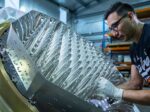Budget 2021-22: What it means for the Circular Economy
With international pressure mounting on Australia to commit to more substantial action on climate change, Budget 2021-22 was an opportunity — coupled with a once-in-a-generation social license to spend strategically to ‘build back better’ — to set out the government’s strategy towards addressing these concerns. So what’s in the budget for the Circular Economy? Materials & recycling New funding for waste and resource recovery initiatives was a very modest $78 million. This was not unexpected after last year’s budget announcement of a historically significant ($250m) boost for Australia’s recycling infrastructure. The bulk of new funding has been directed towards diverting organic waste from landfill (thus also addressing emissions reduction). Recycling. The Government is investing $11 million to support Australia’s recycling industry, including an additional $5.9 million over four years from 2021-22 for the National Product Stewardship Investment Fund and $5 million over three years from 2021-22 to help small businesses adopt the Australasian Recycling label. Organic waste. The Government is investing $67 million over four years from 2021-22 to enhance organic waste facilities and support community education to reduce food waste going to landfill. This includes: $59.8 million to deliver grants in partnership with states and territories through a Food Waste for Healthy Soils Fund to enhance existing organic waste and processing infrastructure and make better use of this resource. $7.2 million to deliver a community and education program on the benefits of processed organic waste. NSW Circular welcomes these recycling and organic waste initiatives including the Food Waste for Healthy Soils. A similar grants program for textiles is urgently needed to tackle textile waste. Australia is ranked second in the world for textile disposal. Households account for nearly 90% of our textile waste. As a nation we threw away some 300,000 tonnes of textiles in 2018- 19. Of this, over 90% […]










